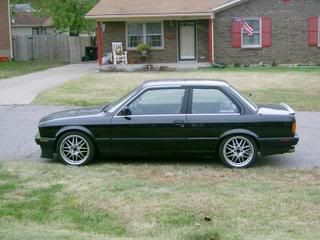So as not to continue to hijack another thread, I've made my own.
Ok, so I understand that your sayin about the restriction of the cats, but...
Here we dont have to run cats, so we dont have that restriction. I know in the early 90's we used to race Nissan Primera's here (pretty much the same the BTCC cars of the same era) , and my one friend from Nissan Motorsport was tellign me how as they went further from the motor their exhaust Dia got bigger, starting at around 50mm, and ending in a 76mm dia, and they still do this on the Grp A Nissan 350z, and I also hear that the BMW e90 330i use this same exhaust (all running a single pipe). Strange how they use a similar exhaust design on a full worked 2.0lt 4cyl and on a stock 3.5lt V6, or 3.0lt str8 six.
Which brings me to my next question, would a single pipe be much better that a dual exhaust ?
IMO, the 2 places to extract power from the M20 is on the intake and exhaust, not so much so on with stroking it as such (although it does make a difference)
Ok, so I understand that your sayin about the restriction of the cats, but...
Here we dont have to run cats, so we dont have that restriction. I know in the early 90's we used to race Nissan Primera's here (pretty much the same the BTCC cars of the same era) , and my one friend from Nissan Motorsport was tellign me how as they went further from the motor their exhaust Dia got bigger, starting at around 50mm, and ending in a 76mm dia, and they still do this on the Grp A Nissan 350z, and I also hear that the BMW e90 330i use this same exhaust (all running a single pipe). Strange how they use a similar exhaust design on a full worked 2.0lt 4cyl and on a stock 3.5lt V6, or 3.0lt str8 six.
Which brings me to my next question, would a single pipe be much better that a dual exhaust ?
IMO, the 2 places to extract power from the M20 is on the intake and exhaust, not so much so on with stroking it as such (although it does make a difference)




 :firehop:
:firehop:
Comment